E-PORTFOLIO
AIAD SEM 6

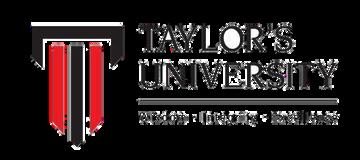



PHASE 2: POSSIBILITY
ARCHITECTURE- LIVE PROJECT

In the first project, we will explore the chosen location or street and analyze a scenario that can serve as the main narrative of the project. We need to speculate or unveil the narrative based on the proposed theme and start constructing a series of scenarios that respond to the context. I have chosen the Guan Di Temple near Petaling Street as the source of inspiration, focusing on the history of handmade incense and the gradual disappearance of traditional culture as the background, which I will express through drawings.



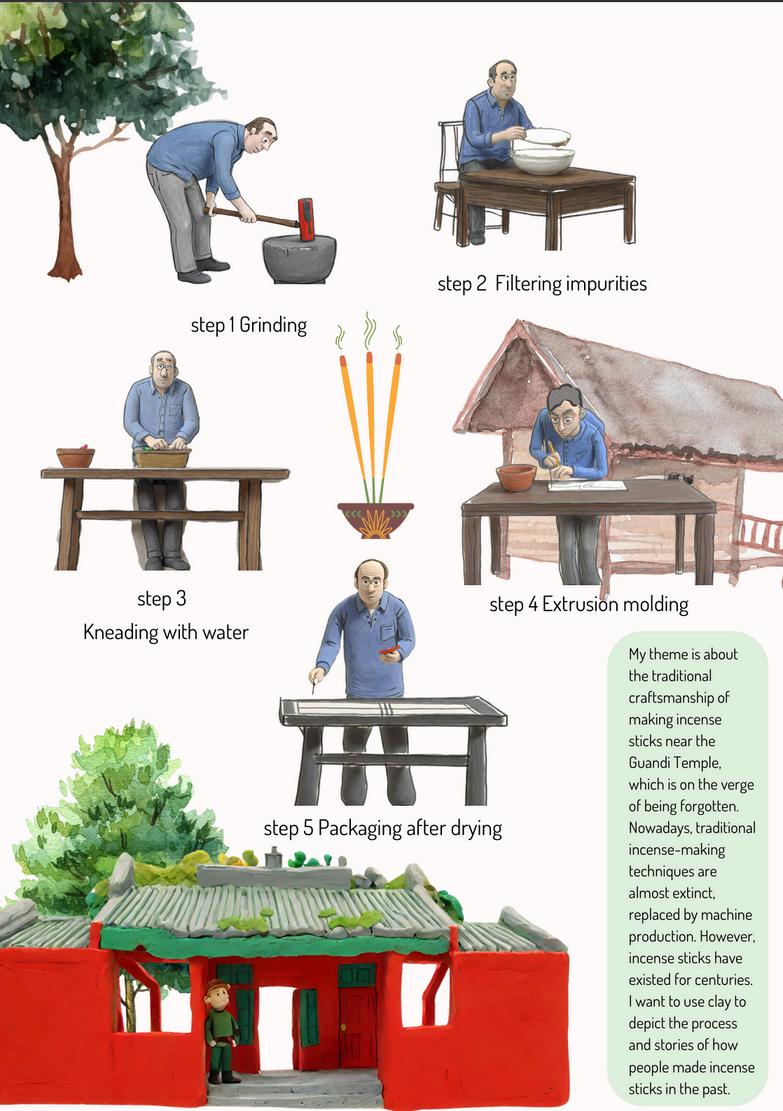
Initially, I planned to use clay modeling to showcase the process of making traditional incense. By manually sculpting each detail, I believed this approach would better capture the essence of craftsmanship and the tactile connection between the maker and the materials. The tactile nature of clay would allow for a deeper representation of traditional craftsmanship, highlighting the meticulousness and dedication required in the creation of handmade incense. This method not only conveys the process itself but also reflects the fading cultural practice. However, I later realized that the preservation of clay might not be durable enough, and the workload was extremely high. So, I decided to adopt a different approach to present it.

Before the crit 2, I immersed myself in a more in-depth exploration of the incense-making process and the historical context of this traditional craft. I investigated the cultural significance of these practices, tracing their origins and understanding the intricate methods passed down through generations. I also examined the reasons behind the gradual disappearance of these handmade techniques, considering factors such as modernization, the rise of mass production, and the shifting interests of society. Additionally, I looked into why modern young people are increasingly disengaged from traditional cultural activities, exploring how the fast-paced lifestyle, digitalization, and changing values have contributed to the declining interest in preserving and participating in these time-honored practices.

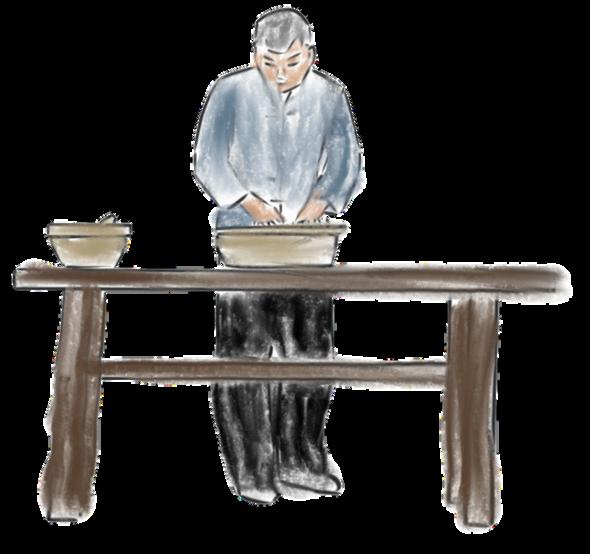



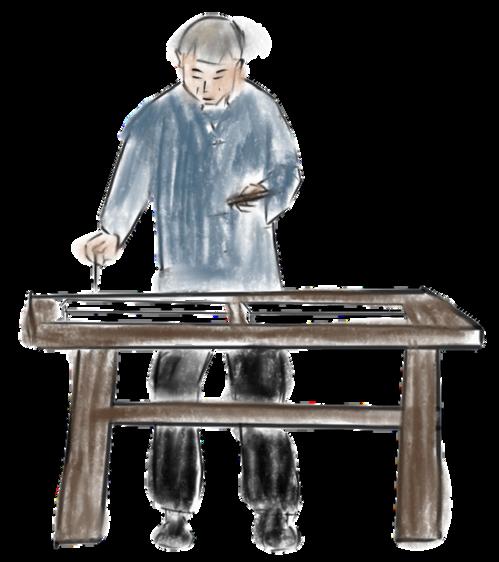

Ultimately, I chose to express the contrast between how people in the past and present engage with traditional activities through drawings. In the past, people held traditional activities in high regard and actively participated in many cultural practices, such as lion dancing, and everyone would offer incense and prayers. In contrast, modern people typically only offer incense during major festivals, and many young people no longer visit temples to do so. To highlight this shift, I also depicted the act of offering incense through a digital screen, illustrating how modern individuals are increasingly less likely to engage in traditional activities in person.

In this project, I embarked on a journey to explore the history and cultural significance of traditional incense-making, while also understanding the context of the gradual disappearance of traditional customs. As my research deepened, I gradually realized the reasons behind the decline of these traditional crafts. The pressures of modernization, the rise of mass production, and shifts in societal values have slowly eroded these cultural practices. Additionally, the disconnection of modern youth from traditional activities became a significant theme in my exploration. I found that in the fast-paced digital world, many young people no longer participate in cultural traditions that once held an important place in community life.
In my work, I depicted how people in the past actively participated in cultural activities, viewing them as an indispensable part of their lives. I contrasted this with modern attitudes, where participation in traditional rituals, such as offering incense, has become less frequent and is usually reserved for major festivals. A key element in my drawings is the scene of offering incense through a digital screen. This symbolizes the growing disconnect between contemporary individuals and traditional customs, as many people now prefer to engage in these rituals remotely, or not at all. This shift highlights the declining importance of in-person participation in traditional activities in modern society. Reflecting on this project, I am struck by the profound changes in our attitudes towards cultural heritage. This experience has deepened my understanding of the importance of preserving traditional customs and has also reinforced the value of using art as a medium to express and explore complex cultural narratives.
The second project is a group assignment where our entire class is tasked with creating a physical installation to be placed in the public area of REX KL, designed specifically as an installation for the community. We have been divided into several groups, each responsible for different aspects of the project, such as weaving, editing, installation construction, website development, and more. Our group's installation is a bookshelf designed to provide a resting spot for passersby, with the books mainly targeted towards children. My role is to serve as a backup for model making and to assist the editing group.

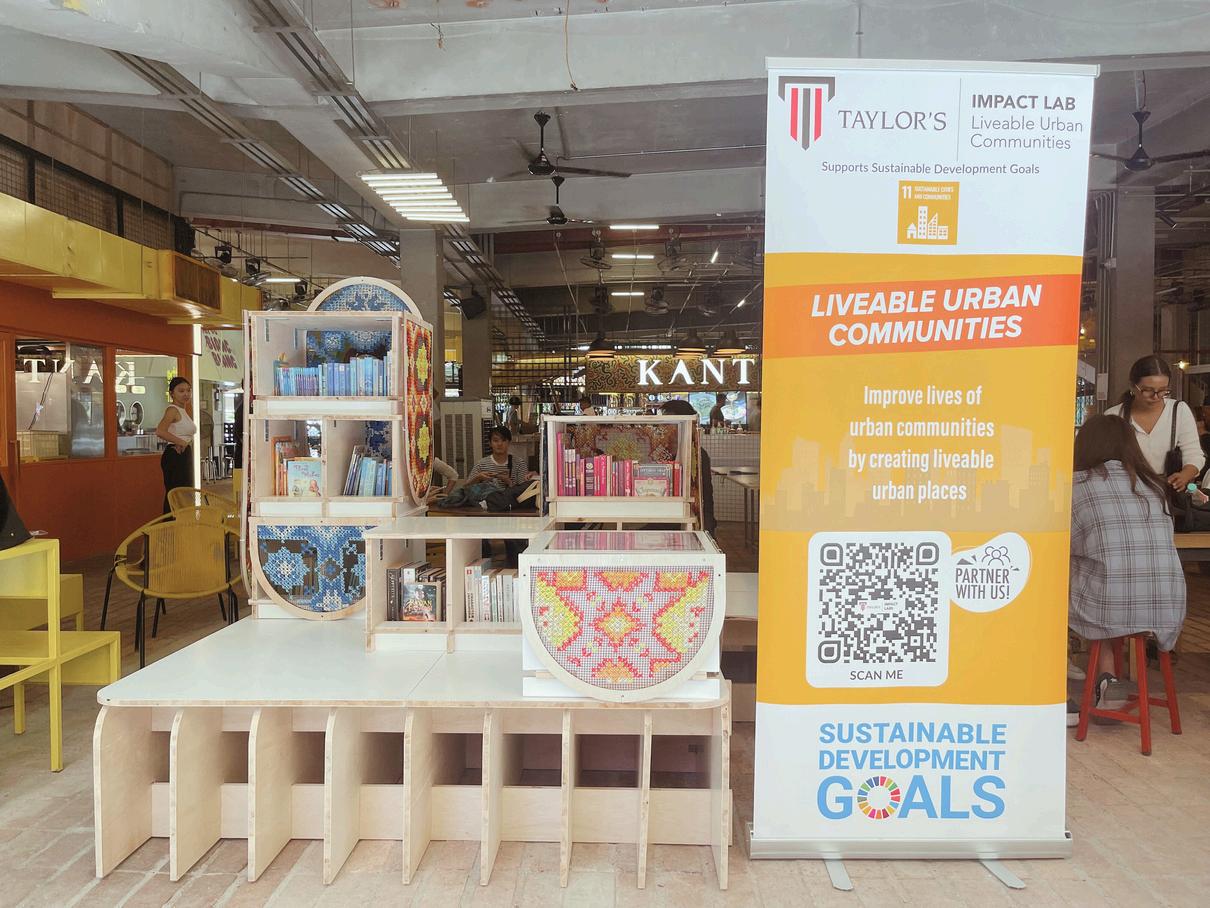
This project was an important learning experience, primarily because it required us to work collaboratively as a group to achieve a common goal. Coordinating and organizing such a large team was no easy task, and we encountered many challenges along the way. With so many participants, ensuring that everyone was on the same page and that all tasks were completed on time required a great deal of effort and patience. However, despite these challenges, the project ultimately brought us all together. When we assembled the installation on-site at REX KL and saw everyone working together to bring our shared vision to life, the sense of accomplishment was indescribable.
The final edited video, which documented the entire process from the initial concept to the finished product, serves as a testament to our hard work throughout the semester. Watching this video fills us with pride and satisfaction, knowing that we overcame numerous difficulties and created something meaningful together. Through this project, I learned that successful group collaboration relies on effective communication, mutual understanding, and a flexible and accommodating attitude.
In Phase 3, we were tasked with continuing the design expression based on the topic we selected in Phase 1. I chose to explore the theme of traditional incense making, a craft that is both rich in cultural significance and intricate in its process. To bring this theme to life, I began by using SketchUp (su) to create detailed models that visually represent the various stages of incense production. These models served as a foundation for my design.
After completing the 3D models, I took screenshots of each one and used Photoshop (ps) to create collages that effectively convey the narrative and aesthetic of my project.
The collages allowed me to combine different visual elements and textures, helping to illustrate the traditional and sensory aspects of incense making in a contemporary and artistic way.

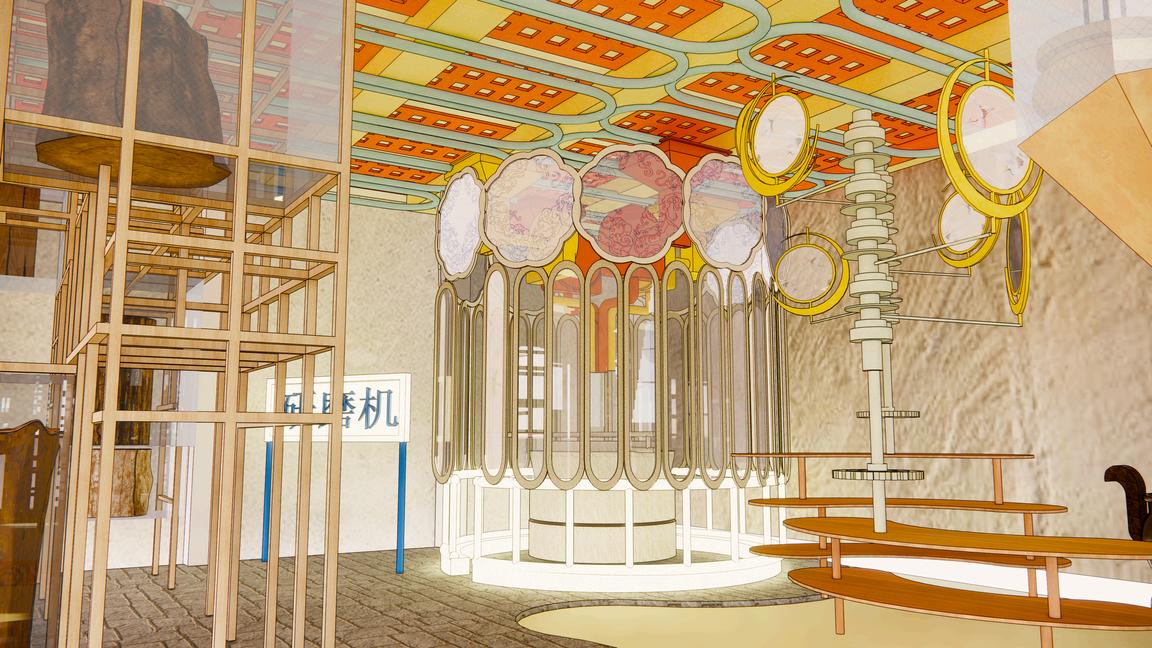
you can manually grind the wood into powder
you can choose the raw materials for making your preferred incense, such as sandalwood or fruitwood. Each type of wood offers a different fragrance profile and energy.

put the powder into the molds under the press
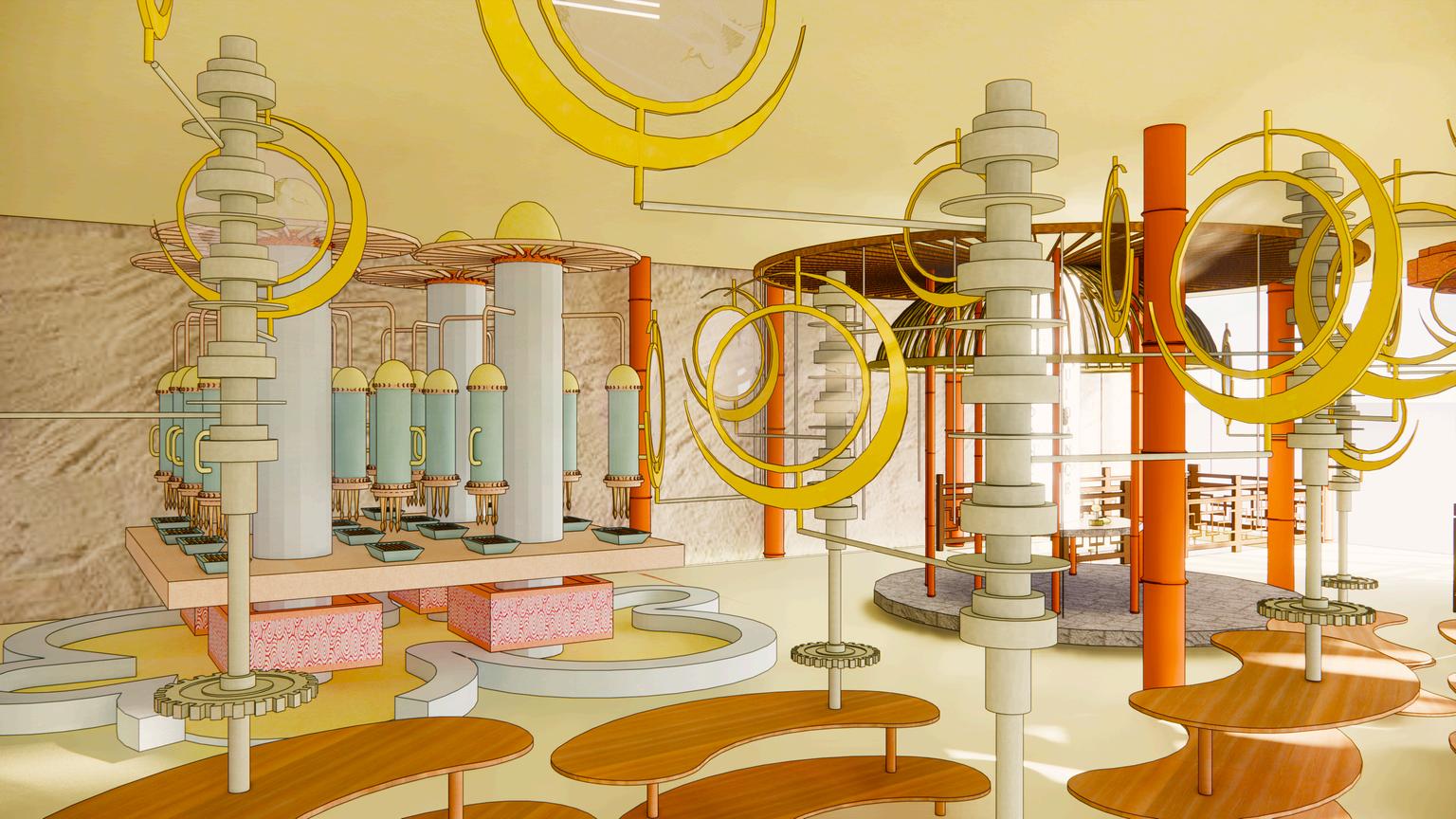
you can place the clay into this container and manually operate the tool to extrude it into strips, which can then be dried and used.
You can choose to purchase ready-made incense according to your preference.
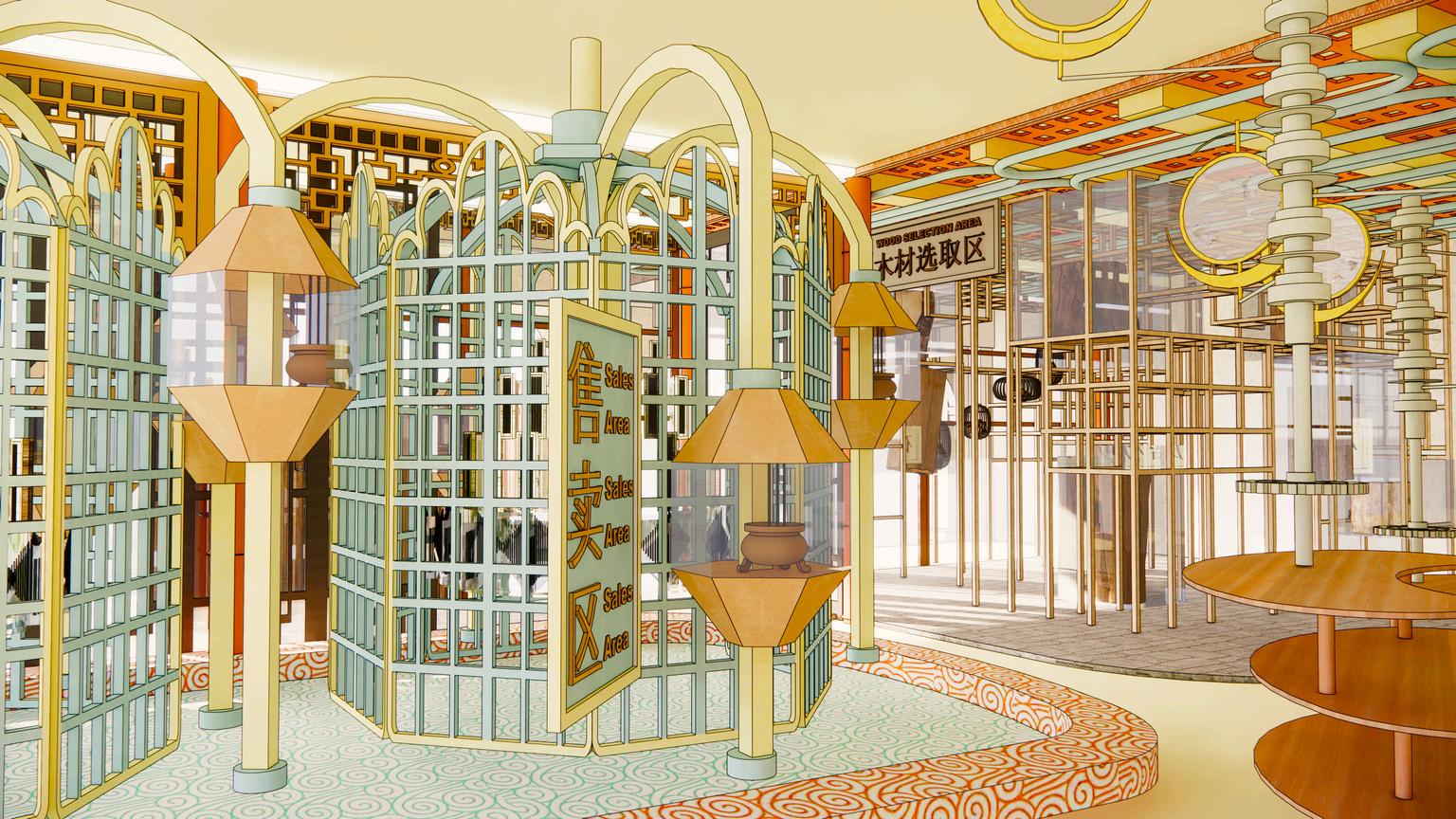

This presentation board is designed to visually represent the main theme of my project, using the models I meticulously created to highlight key aspects of traditional incense making. The board features a comprehensive display of my primary models, which include a clay press, a grinding machine, and a wood selection area. Each of these models plays a crucial role in illustrating different stages of the incensemaking process.
The clay press model, for instance, represents the initial step in shaping the raw materials, while the grinding machine model showcases the precision required to achieve the fine texture needed for highquality incense. The wood selection area emphasizes the importance of choosing the right type of wood, which is essential for creating the desired aroma and quality of the incense.
By incorporating these models into the board, I aim to provide a detailed and tangible understanding of the traditional techniques involved in incense production. This not only highlights the craftsmanship and attention to detail required but also connects the viewer with the cultural significance of this ancient practice.
This presentation board includes floor plans and sectional drawings to provide a more detailed view of the layout of my incense-making school. These diagrams clearly illustrate the workflow of the entire production process, from handling raw materials to the final product, with meticulous planning of each step's spatial arrangement. The diagrams enable viewers to intuitively understand the various stages of the process and their spatial relationships.
Additionally, I incorporated abstract collage techniques to blend these technical drawings with artistic elements, enhancing the board's visual appeal and artistic quality. This collage approach not only adds a unique aesthetic dimension to the board but also offers a creative way to present the complexities and beauty of the incense-making process.
Through this design, I aimed to merge practicality with artistic expression, breaking the conventional boundaries of presentation boards and making the overall narrative of the project more engaging and visually captivating.
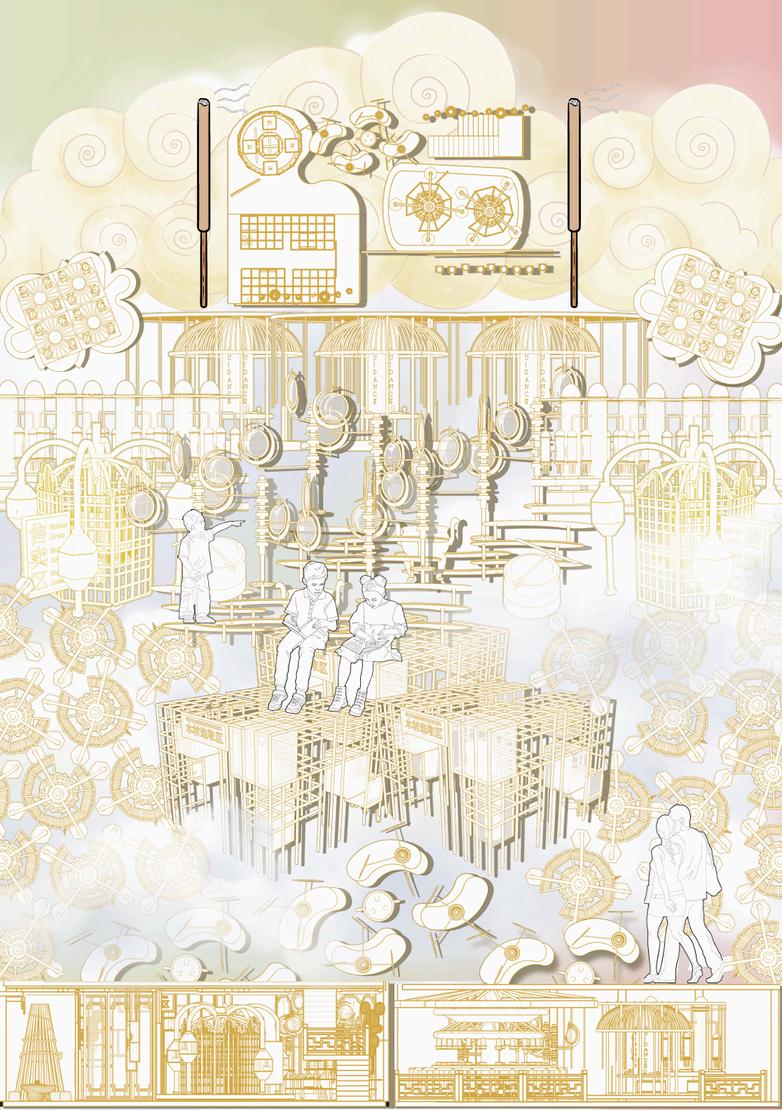
During this semester's project, I experienced unprecedented levels of pressure. Although the number of courses was not overwhelming, the high expectations of the AIAD program made the demands increasingly challenging. Initially, I was quite confused and struggled to determine the direction for my chosen topic. However, with guidance from my tutor, I gradually began to gain clarity and refine the focus of my work.
Despite these efforts, I still did not achieve 100% satisfaction with the final outcome. There were several areas that required more consideration. For instance, the choice of site was a significant aspect where I received feedback from mentors suggesting better alternatives. Additionally, my work appeared somewhat one-dimensional and did not fully capture the essence of the gradual disappearance of traditional culture.
Through the evaluation process, I gained valuable insights into these shortcomings. I recognized that there are areas where my project needs improvement, such as more comprehensive representation and a more effective site selection strategy. Moving forward, I am determined to address these issues, making the necessary revisions to my project and preparing more thoroughly for the next semester. This experience has been a crucial learning opportunity, and I am committed to enhancing my approach and execution in future projects. I would like to express my gratitude to all the teachers who guided me.thank you!